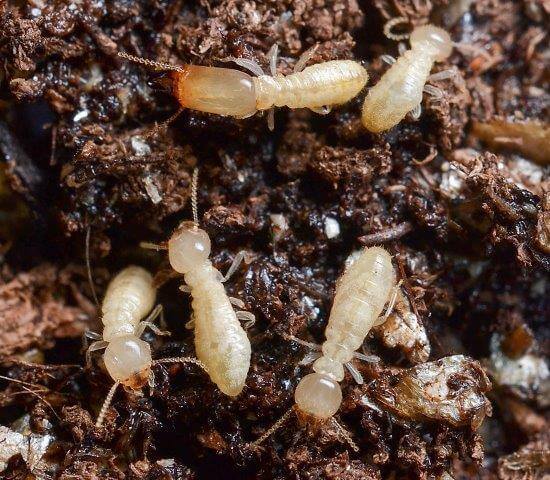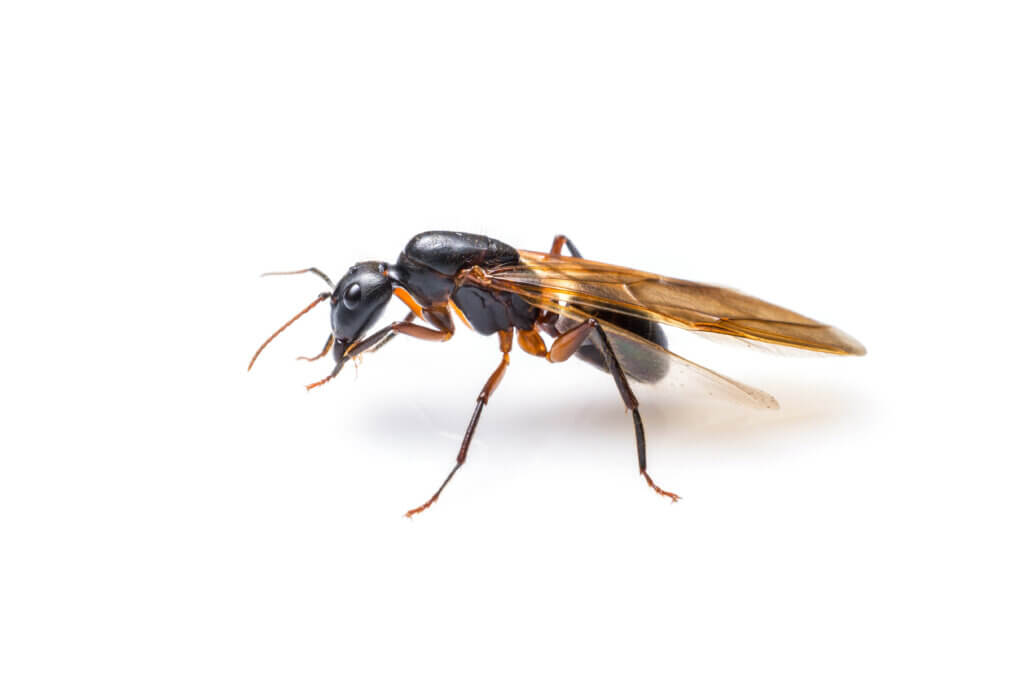How to Tell the Difference between Termites and Carpenter Ants
People often have trouble telling termites and carpenter ants apart. Both pests burrow into water-damaged support beams, window frames, and other wood structures. Despite this similarity, the insects’ appearance and habits can help you tell the difference between a carpenter ant and a termite.
What Do They Look Like?

A worker termite is wingless, creamy-white in color, and has straight antennae. You’re unlikely to see these pests unless you break open a mud tube. On the other hand, carpenter ants are a common sight. Worker ants are black with three body segments, a slender waist, and bent antennae.

The difference between carpenter ants and termites isn’t as obvious with winged reproductives. Both types of insects produce male and female swarmers that are dark brown or black in color. Termite reproductives have cylindrical bodies with four wings of equal size. Meanwhile, carpenter ant swarmers have distinct waists and a set of large wings as well as a pair of smaller ones.
Signs of a Termite or Carpenter Ant Infestation
The presence of swarmers flying around a home, apartment building, or commercial space is a sign of a problem with either carpenter ants or termites. However, each insect’s behavior is also a clue to its species.
Termites
Termite issues often go unnoticed. Colonies nest underground, and the workers stay hidden inside wood. One key indication of a termite problem is mud tubes. The pests build these covered pathways across brick, stone, or concrete, including foundation walls in basements and crawl spaces, to travel to new sources of lumber.
Carpenter Ants
Carpenter ants establish a path between their nest and a food source. If your home or business has an infestation, you may notice trails of ants moving to or from a cabinet, pantry, or storeroom. Finding sawdust-like frass is another sign. Carpenter ants do not eat wood, so they discard shavings as well as waste through a hole in the timber’s surface, and the falling frass piles up on the ground below.
Termite vs. Carpenter Ant Damage
Termites
Termites feed on cellulose in wood and consume timber from the inside out. The pests can go undetected for years and cause widespread damage. Repairing structural essentials like wood supports or subflooring joists can be both expensive and time-consuming. Companies that need to close due to costly renovations also lose revenue.
Carpenter Ants
When inside homes, supermarkets, or warehouses, carpenter ants forage for sweets to eat. The pests often contaminate honey, sugar, fruit, and other restaurant staples and stocked items. In eateries and hotels, carpenter ant sightings may also lead to poor guest experiences and bad reviews.
Once inside a property, both termites and carpenter ants are difficult to control. Contact OPC to discuss the best route for removal.